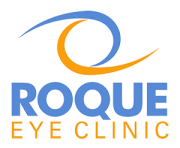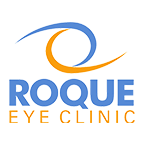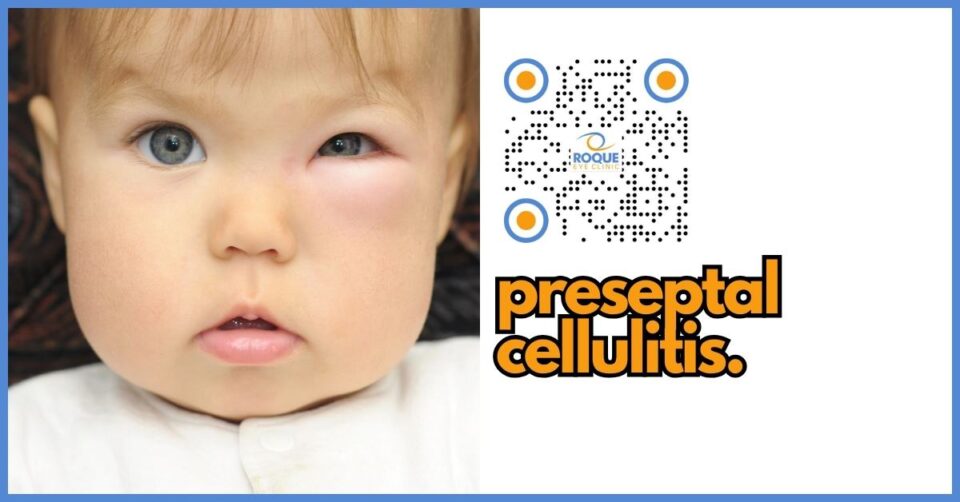Genetic Eye Diseases
A change in the normal DNA sequence produces genetic disorders. Most genetic disorders are caused by a combination of genetic and environmental factors. A multitude of human diseases are known to be caused by single gene (monogenic) disorders and chromosomal abnormalities, and many of which involve the eye.
- Below is a list of known genetic (inherited) eye diseases (monogenic and multigenic) along with their inheritance patterns and associated gene or chromosomal abnormality.
- Achromatopsia (AR; CNGA3, CNGB3)
- Aniridia (AD; PAX6, ELP4)
- Anterior segment mesenchymal dysgenesis (AD; FOXE3, PITX3)
- Avellino corneal dystrophy (combined granular-lattice corneal dystrophy) (AD; TGFBI)
- Axenfeld-Rieger syndrome (AD; PITX2, FOXC1)
- Best macular dystrophy (AD; BEST1)
- Bietti crystalline corneoretinal dystrophy (AR; CYP4V2)
- Blepharophimosis, Ptosis and Epicanthus Inversus (BPES) (AD 50% de novo; FOXL2)
- Blue-cone monochromacy (XLR; OPN1LW, OPN1MW)
- Charge syndrome (AD; CHD7, SEMA3E)
- Choroideremia (XLD; CHM)
- Color blindness, Deutan (XL; OPN1MW)
- Color blindness, Protan (XL; OPN1LW)
- Color blindness, Tritan (AD; OPN1SW)
- Cone-rod dystrophy (AD,AR,XL; numerous)
- Congenital cataract, non-syndromic (AD,AR; EPHA2, CRYGD, CRYAA, CRYAB, CRYBA1, CRYBA3, CRYBA, CRYBB, CRYGA, CRYGB, CRYGC, CRYGS, BSFP1, BSFP2, HSF4, GJA3, GJA8, MIP, FYCO1)
- Congenital Fibrosis of Extraocular Muscles (AD,AR; KIF21A, PHOX2A, ARIX, TUBB3)
- Congenital Nystagmus (AD, AR, XL; numerous)
- Congenital stationary nightblindness (AD, AR, XL; numerous)
- Cornea Plana (AR; KERA)
- Crouzon syndrome (AD: FGFR2)
- Duane-radial ray syndrome (AD; SALL4)
- Ectopia lentis et pupillae (AR; ADAMTSL4)
- Ectopia lentis familial (AD; FBN1)
- Ectopia lentis isolated (AR; ADAMTSL4)
- Ehlers-Danlos Syndrome (AD; COL5A1, COL5A2, COL3A1, TNXB)
- Epithelial basement membrane corneal dystrophy (map dot fingerprint corneal dystrophy) (AD; TGFBI)
- Fuch’s endothelial corneal dystrophy (AD; numerous)
- Glaucoma congenital (AR; CYP1B1, MYOC)
- Glaucoma open angle juvenile onset (AD; MYOC, CYP1B1)
- Glaucoma open angle adult onset (AD; OPTN, ASB10, WDR36)
- Glaucoma normal tension (-; OPA1, OPTN)
- Granular corneal dystrophy (Groenouw type 1) (AD; TGFBI)
- Incontinentia Pigmenti (Bloch-Sulzberger syndrome) (XLD; IKBKG)
- Lattice corneal dystrophy (AD; TGFBI)
- Leber congenital amaurosis (AD, AR; numerous)
- Leber hereditary optic neuropathy (Mitochondrial; MTND1, MTND4, MTND5, MTND6)
- Leigh syndrome (Mitochondrial; numerous)
- Macular degeneration, age-related (Multi; numerous)
- Macular corneal dystrophy (Groenouw type II) (AR; CHST6)
- Marfan syndrome (AD; FBN1)
- Meesmann corneal dystrophy (AD; KRT3, KRT12)
- MELAS syndrome (Mitochondrial, multiple)
- Neurofibromatosis type 1 (AD; NF1)
- Neurofibromatosis type 2 (AD; NF2)
- Neuropathy, Ataxia, Retinitis Pigmentosa NARP (Mitochondrial; MT-ATP6)
- Occult macular dystrophy (AD; RP1L1)
- Ocular albinism (XK; GPR143)
- Oculocutaneous albinism (AR; TYR, OCA2, TYRP1, or SLC45A2, MC1R)
- Optic Atrophy (AD, AR, XL; numerous)
- Peter’s anomaly (AD, AR; PAX6, PITX2, CYP1B1, FOXC1)
- Pseudoexfoliation syndrome (AD; LOXLN)
- Reis-Buckler corneal dystrophy (AD; TGFBI)
- Retinitis pigmentosa (AD, AR, XLR; numerous)
- Retinoblastoma (AD, sporadic; RB1)
- Schnyder corneal dystrophy (AD; UBIAD1)
- Septic-Optic Dysplasia (De Morsier Syndrome) (AD, AR, sporadic; HESX1, OTX2, SOX2)
- Stargardt Disease/Fundus Flavimaculatus (AD, AR; ABCA4 majority, ELOVL4, PROM1)
- Stickler syndrome (AD (Type I,II,III), AR (Type IV, V); COL2A1, COL11A1, COL11A2, COL9A1, COL9A2)
- Syndromic microphthalmia 1-14 (AD, AR, XL; NAA10, BCOR, SOX2, OTX2, BMP4, HCCS, STRA6, VAX1, RARB, HMGB3, MAB21L2)
- Treacher Collins syndrome (AD, AR; numerous)
- Tuberous sclerosis (AD ⅔ de nove; TSC1 and TSC2)
- Usher syndrome (AR; 11 genes, majority due to MYO7A, USH2A)
Genetic testing is a method of examining one’s DNA to look for mutations in the gene that is associated with the clinical condition. It can be done for different reasons: to confirm a clinical diagnosis, to determine the risk of developing the disease in an asymptomatic family member, to determine carriers of the gene mutation who could transfer the mutated gene to an offspring, to determine if a particular medication or treatment will be effective for the condition, to determine if the unborn fetus is carrying the mutation, to find out if the newborn has the mutation so treatment can be started, and to screen an embryo for genetic disorder prior to uterine implantation.
Although genetic testing can provide important information for diagnosis, treatment and illness prevention, there are limitations. A positive result in a healthy person does not always mean that the disease will develop. On the other hand, a negative result does not guarantee that the disease will not develop. The results could take weeks to months, depending on the genetic test type.
The ophthalmologist, clinical geneticist and genetic counselor can help in creating a pedigree, interpret the results of the genetic test, explain the genetic risks, discuss treatment options, and direct the family towards available clinical trials and community support.
Gene therapy refers to a technique of introducing a foreign gene into a patient’s cells in order to treat a disorder. This can be achieved by either removing a stretch of DNA that causes a disease, turn off a gene to prevent it from making a harmful protein, turn on a gene to instruct a cell to make more of a helpful protein, or correct a mutated gene.
Therapeutic genes have to be carried by a vector, such as a recombinant virus that is not harmful to humans, so they can be introduced into target tissues.
In December 2017, the US FDA approved Voretigene neparvovec (Luxturna ™) for the treatment of inherited retinal diseases. Developed by Spark Therapeutics, Luxturna ™ is an RPE65 gene, carried by an adeno-associated serotype 2 virus, that increases the light sensitivity of the retina. The clinical trials involve subretinal injection of Luxturna ™ into patients with Leber’s congenital amaurosis and retinitis pigmentosa. This treatment does not restore normal vision but it allows treated patients to see shapes and light so they can get around independently. It is unclear how long the treatment will last, but so far most patients have maintained their vision for one to two years.
Other therapeutic genes are very large and require a larger vector. The equine infectious anemia virus (EIAV) is a bigger virus than the AAV and has a bigger cargo capacity. Oxford Biomedical developed the LentiVector ™ platform to carry bigger genes such as those for wet age-related macular degeneration (endostatin and angiostatin, Retinostat ™), Stargardt’s disease (ABCA4, StarGen ™), and Usher syndrome (USH2A, UshStat ™). The company is still doing the early phase clinical trials and awaiting FDA approval for these gene therapies.
The eye is a particularly promising area for gene therapy because it is accessible and immune-privileged, meaning the body is less likely to reject the genes introduced during treatment. More therapeutic genes can be studied with the appropriate vector development. The technology can slo be used to include gene-based pharmacotherapies for non-monogenic problems such as macular degeneration and diabetic retinopathy. It will be a groundbreaking achievement to have a treatment that could potentially eradicate blindness.
- Genetics Home Reference, World Wide Web URL: http://ghr.nlm.nih.gov/
- Liu, M., Tuo, J., and Chan, C. (2011). Gene Therapy for Ocular Diseases. Br J Ophthalmol, 95(5): 604-612.
- NCBI Gene Reviews Rare Disease Database, World Wide Web URL: http://www.ncbi.nlm.nih.gov/books/NBK1116/
- Samiy, N. (2014). Gene therapy for retinal diseases. J Ophthalmic Vis Res, 9(4): 506-509.
- Shaberman, B. and Durham, T. (2019). Foundation Fighting Blindness plays an essential and expansive role in driving genetic research for inherited retinal diseases. Genes (Basel), 10 (7): 511.






